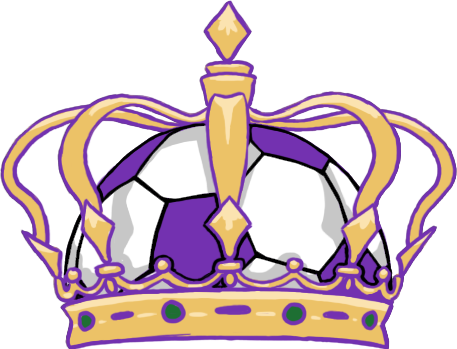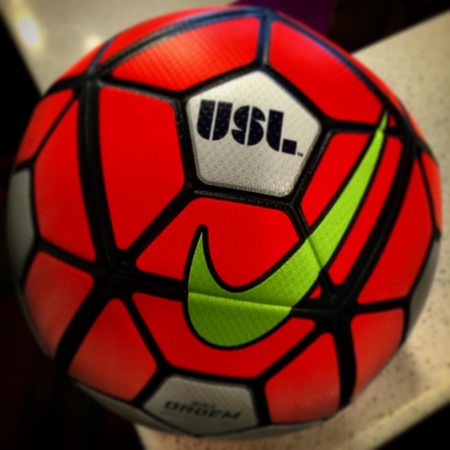The United Soccer League continues to experience phenomenal growth as they prepare to begin the 2016 season. The league boasts the addition of six new clubs to the North American landscape, bringing their total to 29, with an additional club (Reno) already slated to join in 2017.
Four of the six additions are directly associated with MLS clubs; some with unique names (Sporting Kansas City’s Swope Park Rangers, Houston Dynamo’s Rio Grande Valley FC, and Philadelphia Union’s Bethlehem Steel FC), while Orlando City’s is simply Orlando City B. The two new independent teams are FC Cincinnati and San Antonio’s as-yet-unnamed team.
The addition of that many teams would be more remarkable, if it weren’t following a 2015 season that saw a staggering twelve new teams (seven MLS-owned, five independent) nearly double the size of the league. It took MLS 19 years to get to 18 teams, but USL has added that many new teams in just two years.
What remains to be seen is how the league will manage to treat all of its members equitably. Is USL as committed to the independent clubs as they are to their partnership with MLS?

It’s clear that the association with MLS has been beneficial to USL as a whole. At this time, almost all MLS sides have a reserve team participating in USL competition, and all have an affiliation. The supporters of the teams that don’t have their own reserve side are left wondering why they don’t have a chair at the USL table.
The league seems to be attempting to improve their image and long-term stability by placing tighter demands on independent clubs. The obvious example for us is the 2016 hiatus of our local Austin Aztex. While no one can accuse the league for Austin’s financial troubles, is there no league support for organizations that don’t have the safety-net of an established MLS ownership behind them?
Meanwhile, some of the league’s tighter restrictions seem to be less tight for the MLS-2 teams. One has to wonder if the venues of newcomers Orlando City B and the Swope Park Rangers would be found up to league standards if those clubs were independent. The stadiums these reserve sides will call home have seating for 1,000-1,500. While both stadiums have the ability to accommodate larger crowds, the physical features of these venues are not consistent with USL’s stated desire to gain D2 status in the American soccer pyramid.
In 2015, attendance for the MLS reserve sides was among the worst in the league, with the bottom four all being MLS reserve teams. The league overall had an average attendance above 3,300, but those bottom four averaged less than 1,000, with FC Montreal averaging a dismal 313 per match and a season total of just 4,383. It is hard to image a independent club surviving with these numbers, and as we learned from Rochester the league is not unwilling to step in and terminate a club’s franchise agreement when necessary.
The relationship that’s developing between MLS and the USL is certainly an interesting one. This week MLS Commissioner Don Garber gave more than a hint that his league can exert some control over game-day operations in USL when he addressed the future of instant replay. It is uncertain if or when MLS will adopt instant replay itself, but Garber feels that USL makes an ideal proving ground for the technology:
“We’re leading the charge [on replay], we’ve put up our hand, and have said to those folks who are looking at it internationally, we’ll be happy to test it here, even in MLS games. It’s not going to happen in 2016, but we are pretty focused on ensuring we will have a test in the USL.”
These seemingly innocuous comments let us know that the leagues are working in concert together, which probably isn’t a bad thing. But how will this relationship, and the power and money MLS brings to it, affect independent clubs? In addition to their own ongoing financial stability, will they also be required to invest time and money to be the gadget lab for American soccer?
With the volatile past of lower division soccer, it is certainly understandable why USL is eager to have the stability that the MLS relationship provides. Since MLS reserve sides are primarily focused on player development over profitability, it is unlikely one of these clubs would fold, and the historically up-and-down USL has sustainability.
“Soccer is the new sport for America,” according to the USL website. But what form the future of USL will take is hard to tell. While growth is being welcomed by those in the league office, it also presents new problems. Soccer supporters across North America are hopeful that this USL is up to the challenge.


“is there no league support for organizations that don’t have the safety-net of an established MLS ownership behind them?”
So the same amount of league support for organizations that DO have the safety-net of established MLS ownership behind them?
Austin needs to get their own house in order, no one is going to help them. This time last year MLS was talking about them as a possible expansion candidate, and now their third division team has closed shop yet again. Don’t blame your problems on MLS or USL.
You should have quoted the whole sentence, which began: “While no one can accuse the league for Austin’s financial troubles”.
All we’re asking is, given that MLS-2 teams and independent teams clearly have different financial imperatives, does USL have a role in helping independent clubs when needed? They stepped in and took over Rochester – although for only a short time, as it turned out – when the owner couldn’t make it work. If an MLS-2 team has trouble, they have a parent club that can lend a hand. You seem to think that it should be sink-or-swim for independents, and maybe that’s right. I personally think that will be to the detriment of the league in the long run, but I guess we’ll see.